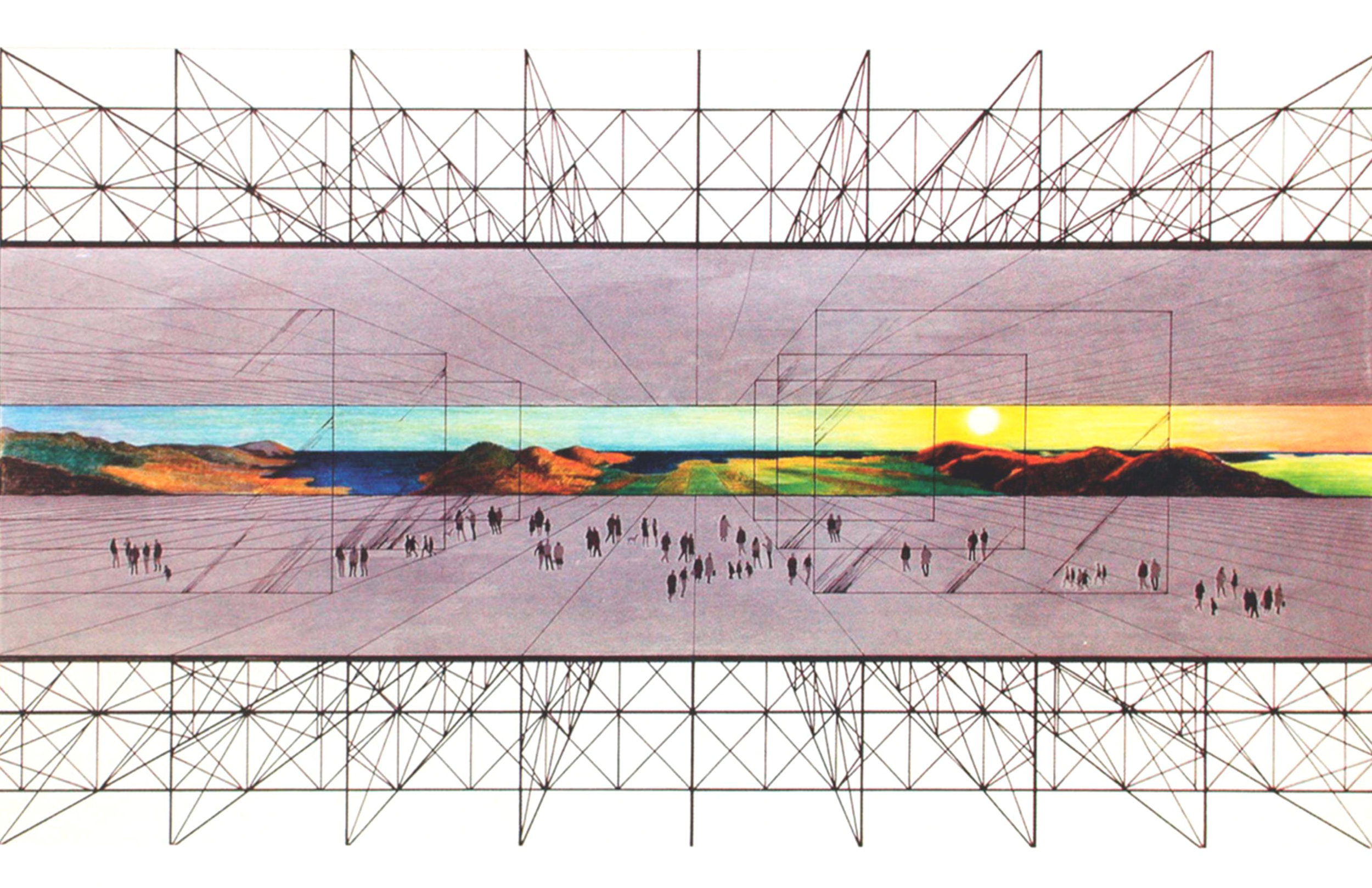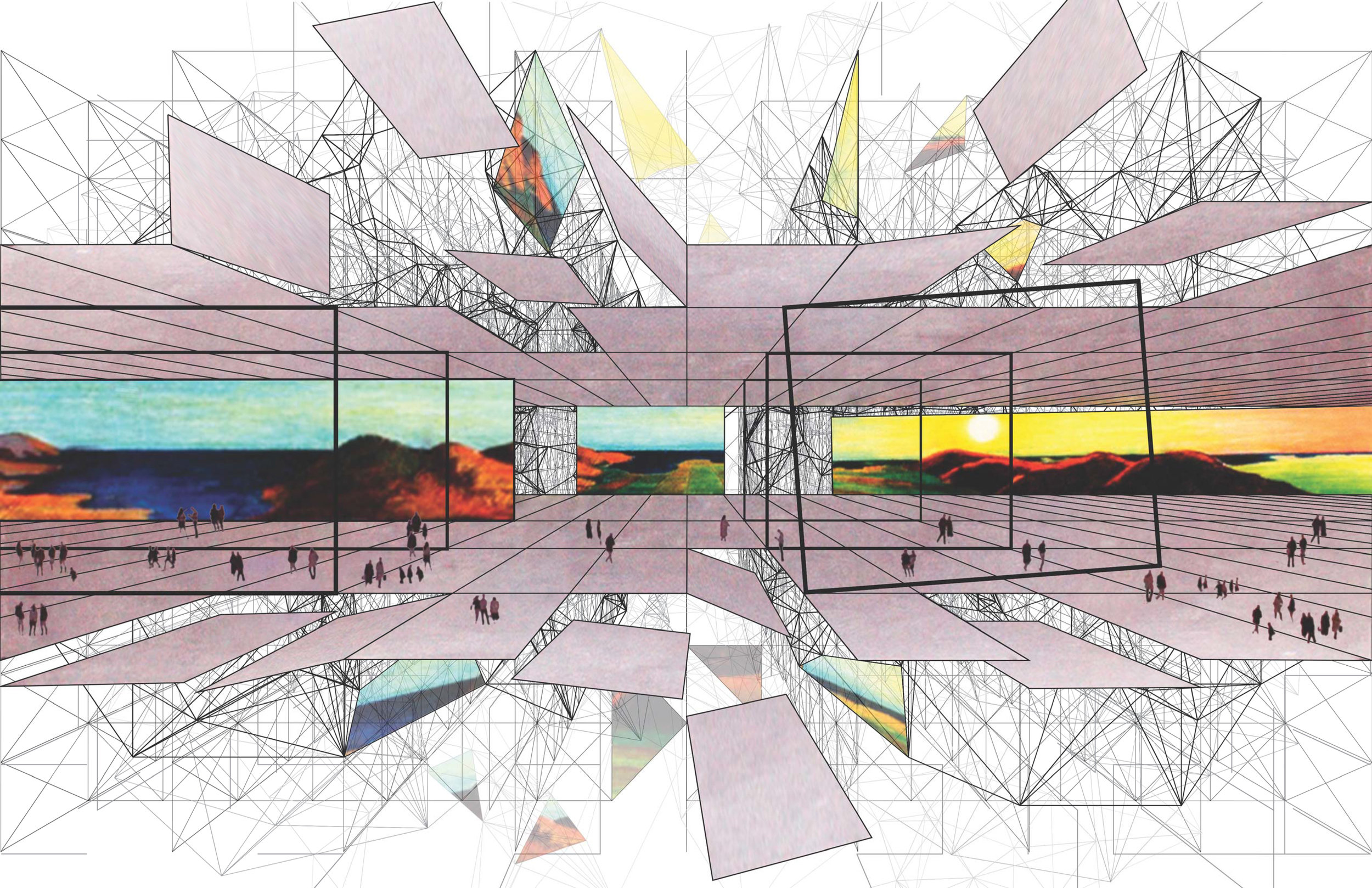Archizoom’s No stop city is a proposed dystopian conclusion to consumer-driven architectural development. In No stop city the box store is the template applied to the entirety of occupiable space, resulting in the endless interior, a space that is so all-encompassing that it defines even the horizon. The project conveyed this notion of uniform regulated space in a series of drawings and installations in the nineteen sixties and seventies that expressed the group’s general discontentment with the homogenizing effects that capitalism was having on the world around them. These drawings included endless architectural column grids that wash over natural landscapes, perverse depictions of consumerist products artificially populating these spaces, and dystopic depictions of the alleged gridded falseness of a system that claims to be natural. What is perhaps most disconcerting is that the group insists that we are living in this world and not even aware of it. This is perhaps the most significant attribute of No-Stop City. Because it never ends, it would be impossible to recognize one was living in it.
Like other architectural projects of this period, such as Rem Koolhaas’ Exodus, No Stop City is a call to action for a people who have been indoctrinated into thinking in a certain way. Namely those who fall into the rank and file of a capitalistic society and allow the market to rule their lives absolutely. Archizoom notes that this homogenizing ideology is rapidly absorbing the world, and that, much like the ruthless efficiency of a modern supermarket, soon the whole world will fall into neatly gridded aisles.
Like many predictive dystopian works the thing that makes No Stop City resonate today is that there is a touch of truth to it. We obviously haven’t gone the route of completely enclosing and commercializing all occupiable space but in certain cases the absurdity of market-driven forces begin to contradict common sense in ways that Archizoom eluded to. Certainly, when one looks to the increasingly high-end urban playgrounds that the wealthy carve out for themselves, or the collective retreat to simple rustic sensibilities preferred by the middle class, one can’t help but observe the absurdity of a system that derives meaning entirely from one’s ability to acquire wealth. Still, perhaps the most significant force in shaping the current age is one that wasn’t on many minds in 1972 when No Stop City was published.
The defining characteristic of the early twenty-first century is and will likely continue to be the way that we organize information. The internet is the most obvious embodiment of this idea, but the thing that is arguably more significant is the underlying system that makes it work. Search optimization, or more directly, the services that companies such as Google provide. In a network of directly connected nodes of information, a system is only successful when it can seamlessly access other relevant nodes of information instantaneously. The fact that the internet provides an infrastructure for a node-based system of communication is its true utility.
The derivations of Archizoom’s work that I present here, attempt to redefine the perceived horizon with a more technologically driven interpretation and express the inevitability of this new technological horizon. The exact character of this horizon is intentionally vague due to the projective nature of the exercise, but the new drawings intentionally reference the nodal system to express the importance that such a revolutionary shift in information management will have on our perceived reality in the years to come.


